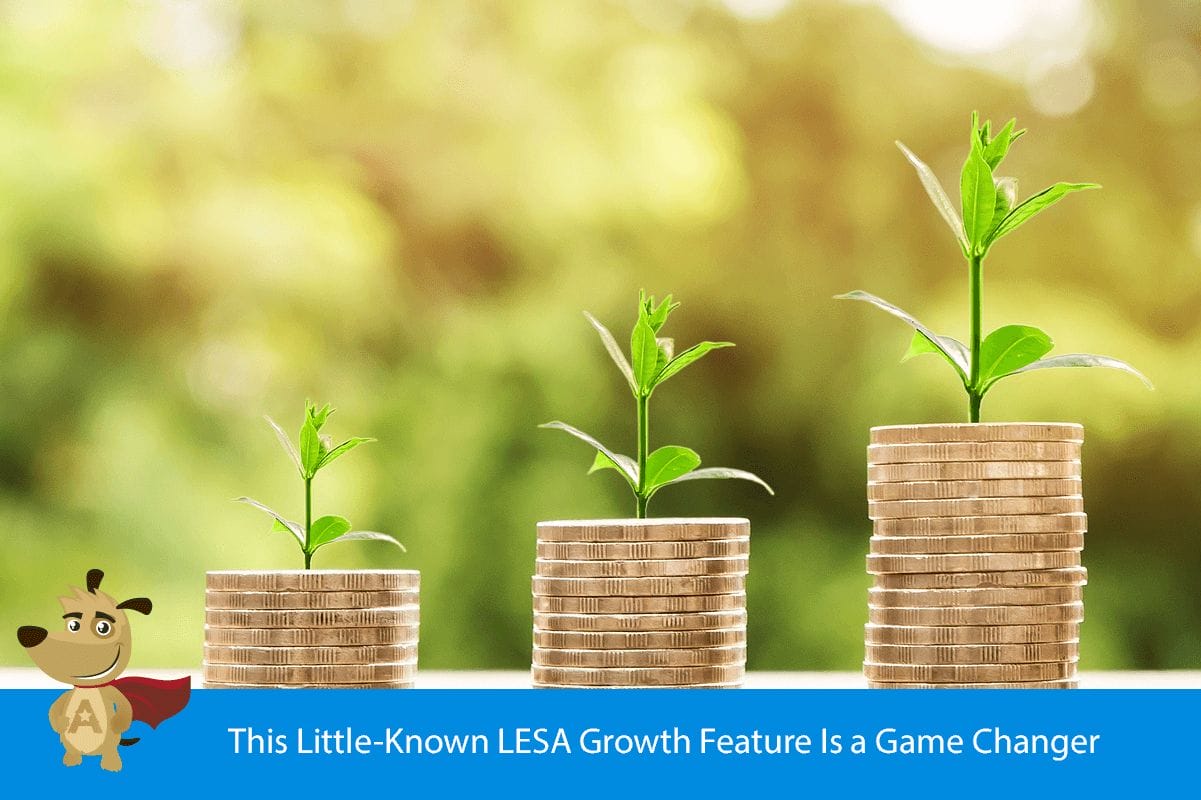
America’s #1 Rated Reverse Lender*

 |
ARLO™REVERSE MORTGAGE
ASSISTANT |
This Little-Known LESA Growth Feature Is a Game Changer
 |
Michael G. Branson, CEO of All Reverse Mortgage, Inc., and moderator of ARLO™, has 45 years of experience in the mortgage banking industry. He has devoted the past 20 years to reverse mortgages exclusively. (License: NMLS# 14040) |
 |
All Reverse Mortgage's editing process includes rigorous fact-checking led by industry experts to ensure all content is accurate and current. This article has been reviewed, edited, and fact-checked by Cliff Auerswald, President and co-creator of ARLO™. (License: NMLS# 14041) |
This Little-Known Reverse Mortgage Feature Could Be a Game Changer
Qualifying for a reverse mortgage is tougher for some people today than it has been in the past. That’s because new underwriting standards have been developed in the past year to ensure that these loan products are safer for the borrowers who use them.
As of April 27, 2015, all prospective reverse mortgage borrowers are subject to a Financial Assessment, in which a lender will analyze a loan applicant’s financial history to determine if a reverse mortgage is suitable for them. This will include a lender taking a look at your credit report, any and all sources of income, as well as past property charge history, among other aspects of your financial profile.
The purpose of all this analysis is to confirm that the prospective borrower has the ability to afford the terms of the reverse mortgage, particularly the payment of ongoing property charges such as property taxes and homeowners insurance.
In the past, prior to the new underwriting rules, some reverse mortgage borrowers opted to take their home equity in a single lump sum payment and spent down their loan proceeds, leaving few funds left to cover their property taxes and homeowners insurance.
Today, there are certain protections put in place to help reverse mortgage borrowers remain current on these mandatory obligations.
Life Expectancy Set-Aside (“LESA”)

When a lender conducts a financial assessment for a reverse mortgage applicant, they are ultimately determining whether the applicant will have sufficient “residual income,” or money left over, to maintain the ongoing mandatory obligations of the reverse mortgage.
If the lender determines the loan applicant’s residual income falls short, the applicant may still be able to qualify for the reverse mortgage. Under these circumstances, a lender will establish what is known as a Life Expectancy Set-Aside.
A Life Expectancy Set-Aside, commonly referred to as a “LESA,” is used for the payment of property taxes, as well as hazard and flood insurance premiums. The funds within the LESA are deducted from a reverse mortgage borrower’s principal limit, which is the total loan proceeds available at loan closing.
Simply put, think of a LESA as being similar to an escrow account that contains funds specifically set-aside for paying taxes and insurance.
LESAs can also be voluntary. Even if a lender determines that the loan applicant does have sufficient income and doesn’t need a LESA, the applicant can choose to establish a LESA just to ensure that property charges are being met. In this case, the lender is responsible for the payment of all property charges.
Since the LESA is being funded using the proceeds from a borrower’s reverse mortgage, that limits the funds that are available for personal use. However, the LESA has a unique and little-known feature that could be beneficial to reverse mortgage borrowers who require them.
LESA actually grows

Not many people are aware of it, but the LESA actually has a growth feature that can increase the amount of funds available on a monthly basis.
Each month, the LESA increases at a rate equal to one-twelfth of the sum of the mortgage interest rate, plus the annual mortgage insurance premium rate (1.25%) from the date that the reverse mortgage loan is funded.
The amount of funds needed for the LESA is determined at loan origination and its balance is adjusted monthly according to a formula developed by the Department of Housing and Urban Development, which administers the federally-insured Home Equity Conversion Mortgage (HECM) program through the Federal Housing Administration. More than 90% of the reverse mortgages found on the market today are HECM loans.
Apart from paying property charges, HECM borrowers can use their available reverse mortgage proceeds to pay for any expenses they have. But for those who wish to use these tax-free loan proceeds to make improvements to their homes, such as incorporating energy-efficient features into their property, a LESA can help.
LESAs and home renovations

For example, homeowners who use Home Energy Renovation Opportunity (HERO) financing will see these charges added to their property tax bill. If the homeowner makes property tax payments through an impound escrow account, like a LESA, the reverse mortgage lender will adjust the homeowner’s monthly payment to include the amount due for HERO financing.
In this situation, the reverse mortgage servicer will pay the tax bill using the funds set-aside within the borrower’s LESA. It is important to note, however, that the LESA may be shortened and may not last as long as initially forecast.
Depending on your particular situation, a LESA could be advantageous even if you don’t require a tax set-aside.
If you would like to learn about LESAs, or how to qualify for a reverse mortgage, call us Toll Free (800) 565-1722, or request your formal quote.

 Michael G. Branson
Michael G. Branson Cliff Auerswald
Cliff Auerswald

April 16th, 2022
April 21st, 2022